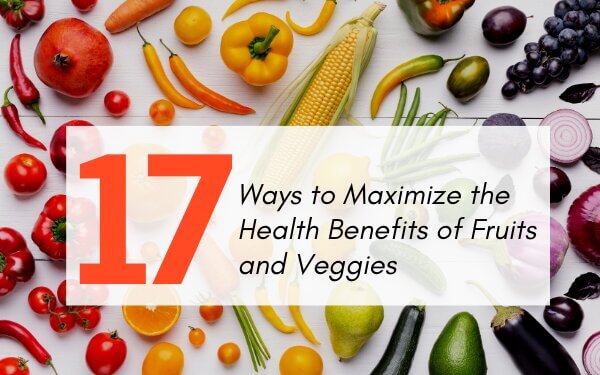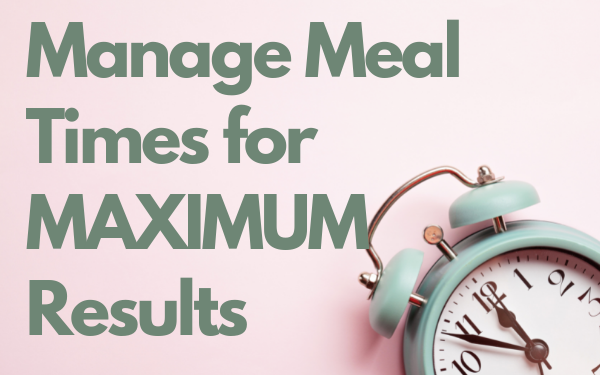One of the biggest challenges in sticking with a diet and achieving the best results possible is that things can get redundant. The easiest and most effective “secret” to overcoming this is to load your diet with a wide variety of fruits and veggies.
When you’re meal prepping, even if you’re doing a great job it can be easy to fall into the trap of eating the same thing over and over throughout the week. That can make it hard to stick to the game plan.
That’s why it’s important to incorporate more fruits and veggies.
Fruit is a quick go-to snack that can provide a healthy source of sugar and carbs to keep your energy levels up through the earlier part of the day. Vegetables are always essential – you can eat them on their own as a snack, or add them to any dish you’re making (or that you’ve prepared as part of your meal prep!) to change things up.
And with so many different fruits and veggies available, it’s a simple way to make sure things don’t get too redundant. To ensure you’re getting the most health benefits from your fruit and veggies follow these…
17 Fruits & Veggies Powerhouse Tips
1.) Look for fresh fruits and veggies. Make sure you’re searching for crisp fruits and vegetables, and avoid wilted options. This one might seem obvious, but the little bit of extra effort makes all the difference – it’s both better tasting and better for you!
2.) Check for bruises. When you’re selecting fruit, avoid bruises – they’re not just unsightly, but bruised fruits have a chemical reaction that reduces the nutrient content.
3.) For pre-packaged salad, search for colors. Nothing wrong with bagged salad options, and a colorful medley indicates a higher level of antioxidants and phytochemicals.
4.) Watch for brightness, too. When it comes to color, it’s not just about variety – the brightness of fruit and vegetable colors indicates a higher level of vitamins and nutrients.
5.) Keep the lettuce dark. When it comes to lettuce, darker shades of green (like romaine) are richer in B vitamins.
6.) Go for variety – not just in the types of fruits and veggies you buy, but also among the types. For example, buy different varieties and colors of onions or bell peppers to make sure you’re getting a wider array of nutrients.
7.) Keep it in-season. The best time to buy any particular fruit or vegetable is when it’s in season, when both the flavor and the nutrient levels will be at their peak.
8.) Buy local (if you can). In addition to supporting local growers, you’ll also get the benefit of fresher and more nutrient-rich fruits and veggies – the less time produce spends in transit, the more nutritious it is!
9.) Check berries for staining. Berries are highly perishable, so before you buy check the container for staining, which indicates that the fruit might be over-ripe and already losing its nutrients.
10.) Find the brightest strawberries you can. What I said about color is especially true for strawberries – look for the fullest bright red you can find.
11.) Use the smell test. Particularly for fruit, a fresh and sweet aroma indicates a peak level of nutritious value.
12.) Variety, variety, variety. I know I keep going back to this, but it really is the key – mixing it up will make sure you get a full range of nutrients, and keeps your diet exciting and flavorful.
13.) Eat raw. In general, raw fruit and veggies are healthier (like every general rule, this one has an exception: cooked tomatoes and carrots have more antioxidants)
14.) Cook for the shortest time possible. If you’re not eating your veggies raw, cook them for the shortest time possible to maximize nutrients.
15.) Steam power. Instead of grilling or baking, steam your vegetables to get the most health benefit from your diet.
16.) Avoid thawing too much. If you’re preparing frozen fruits or veggies, don’t thaw before you cook, the thawing process can cause micro-organisms to multiply and cause spoilage.
17.) Avoid peeling when you can. Healthy fibers are usually in the skin of fruit and veggies, so don’t peel unless it’s necessary.
The best way to get the most out of your fruits and veggies, and ensure all your meals are healthy ones is to plan ahead. So create a meal plan, take one day to prep and you’ll be amazed just how easy it can be.







